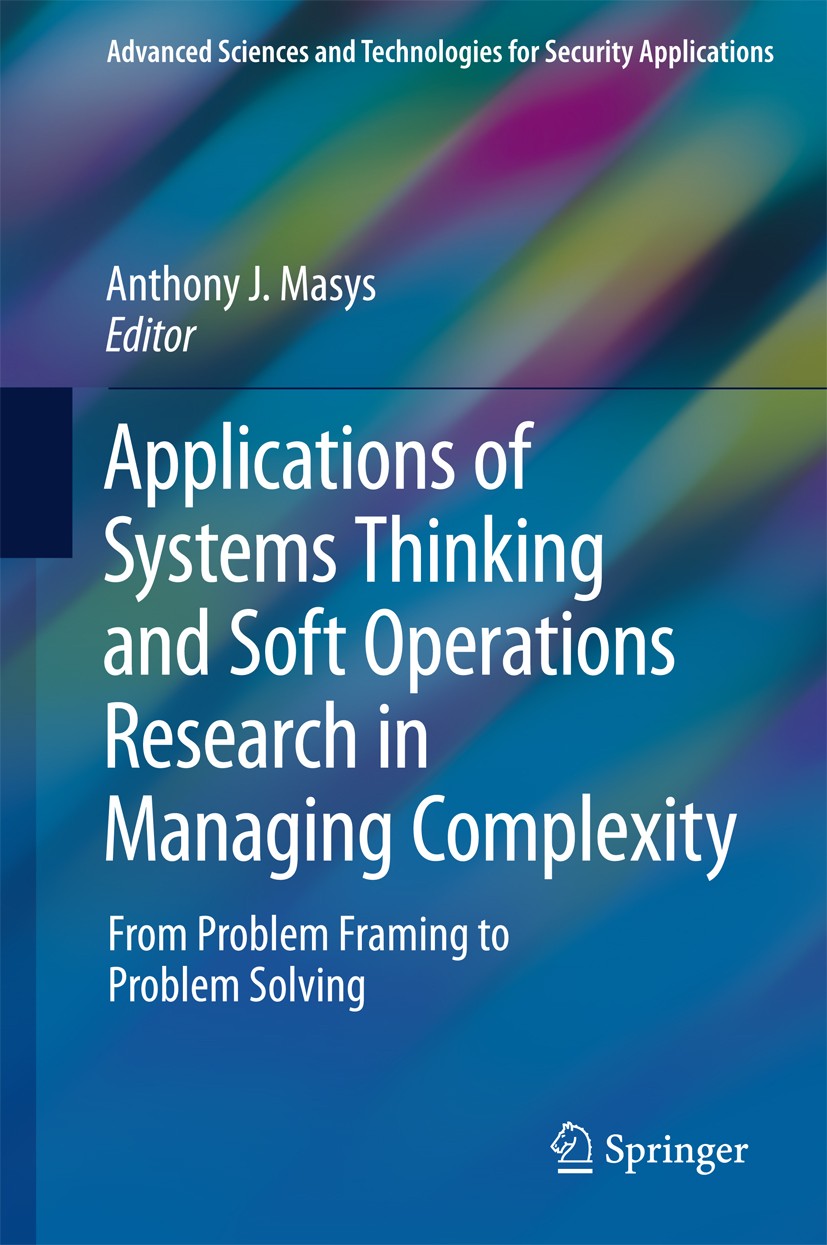| 期刊全称 | Applications of Systems Thinking and Soft Operations Research in Managing Complexity | | 期刊简称 | From Problem Framing | | 影响因子2023 | Anthony J. Masys | | 视频video | http://file.papertrans.cn/160/159587/159587.mp4 | | 发行地址 | Details ‘real world’ applications of Systems Thinking and Soft OR to support various domains.Shows that many situations consist of complex systems of changing problems that interact with each other, w | | 学科分类 | Advanced Sciences and Technologies for Security Applications | | 图书封面 |  | | 影响因子 | .This book captures current trends and developments in the field of systems thinking and soft operations research which can be applied to solve today‘s problems of dynamic complexity and interdependency. Such ‘wicked problems’ and messes are seemingly intractable problems characterized as value-laden, ambiguous, and unstable, that resist being tamed by classical problem solving. Actions and interventions associated with this complex problem space can have highly unpredictable and unintended consequences. Examples of such complex problems include health care reform, global climate change, transnational serious and organized crime, terrorism, homeland security, human security, disaster management, and humanitarian aid. Moving towards the development of solutions to these complex problem spaces depends on the lens we use to examine them and how we frame the problem. It will be shown that systems thinking and soft operations research has had great success in contributing to the management of complexity. . | | Pindex | Book 2016 |
The information of publication is updating

|
|
 |Archiver|手机版|小黑屋|
派博传思国际
( 京公网安备110108008328)
GMT+8, 2025-8-16 08:19
|Archiver|手机版|小黑屋|
派博传思国际
( 京公网安备110108008328)
GMT+8, 2025-8-16 08:19


